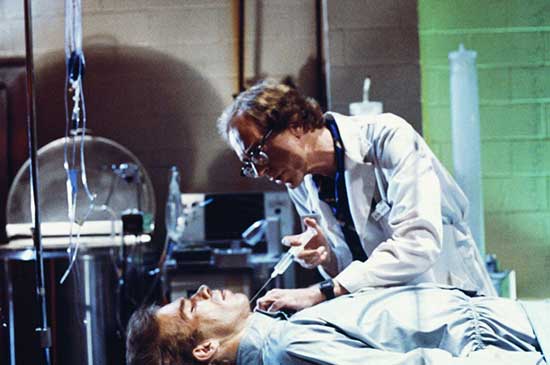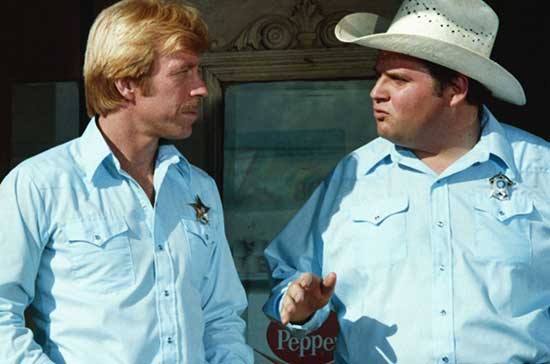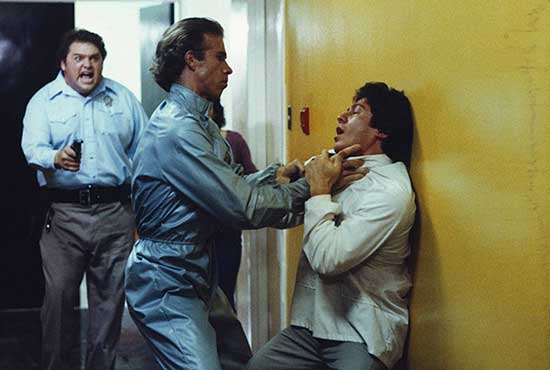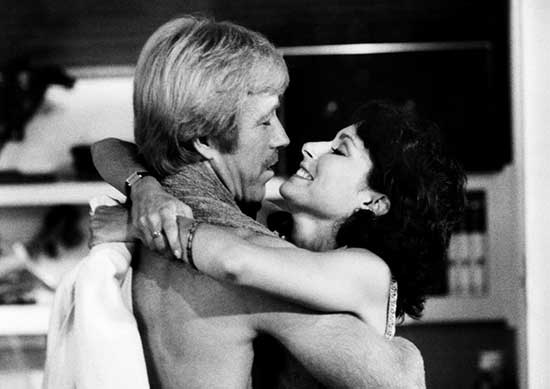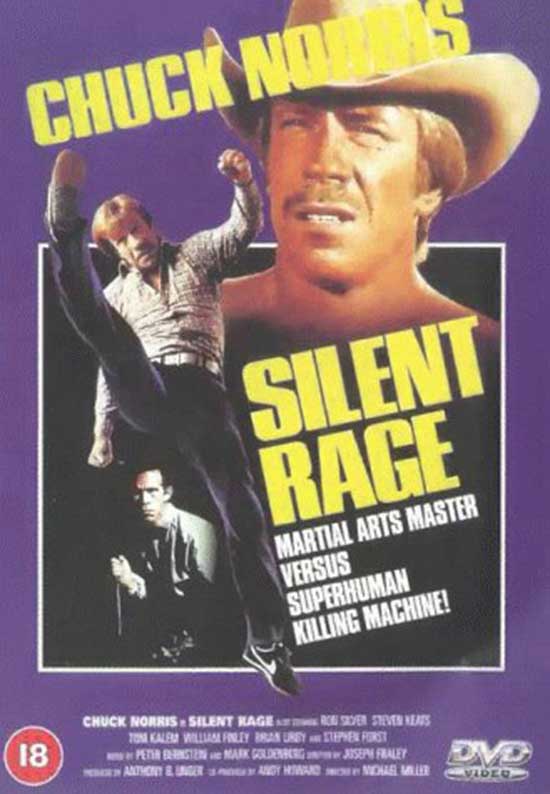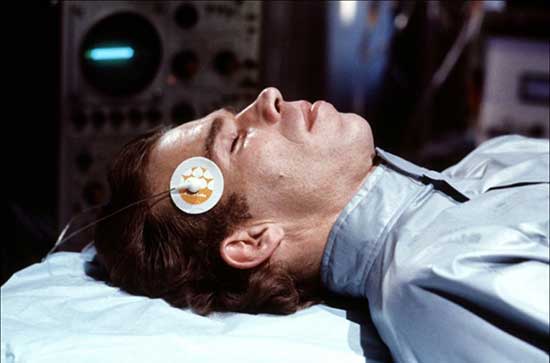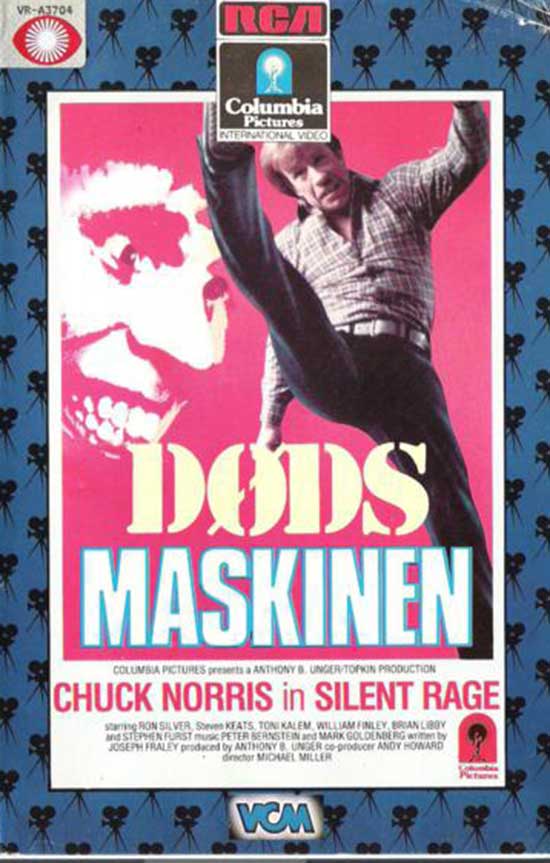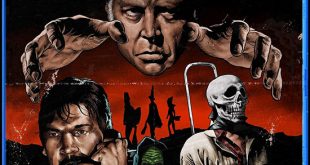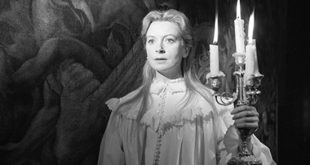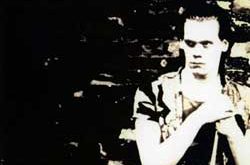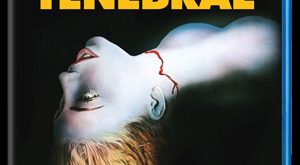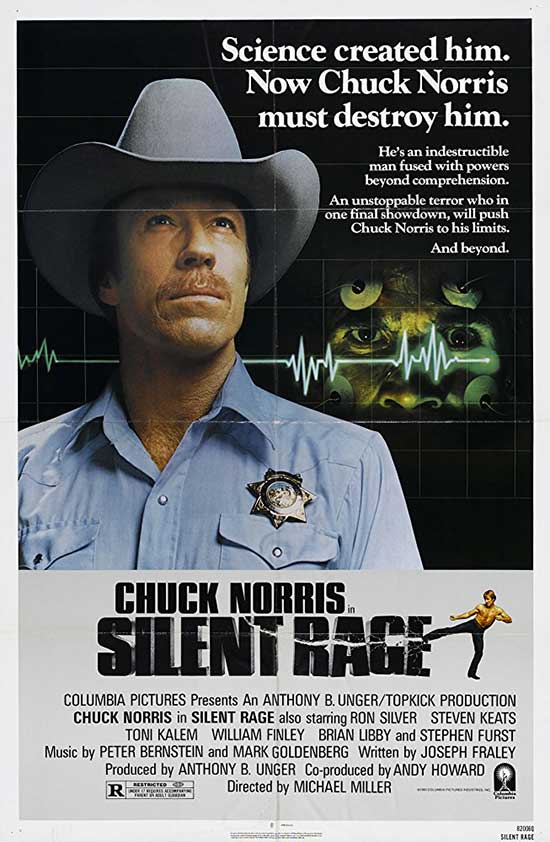
SYNOPSIS:
A sheriff tries to stop the killing spree of a mute maniacal murderer who, as the result of years of medical experimentation, has the ability to self-heal.
REVIEW:
If memory serves, I was in my early teens when I first saw “Silent Rage” (Columbia Pictures, 1982), a drama-thriller-horror film starring action legend Chuck Norris and directed by Michael Miller. I’ve always appreciated Norris’s martial arts background and have enjoyed watching him tangle with—and defeat—big-screen villains. Having been a horror-movie fan all my life, I never thought, until recently watching “Silent Rage” again, of putting it on my “favorites” list. The movie has nearly everything going for it—action, intensity, suspense, drama, strong acting and storytelling; cinematography, music, and sets further enhance this classic film. Besides Norris, the talented cast includes Brian Libby, Ron Silver, Steven Keats, Stephen Furst, Tony Kalem, and William Finley. Joseph Fraley’s well-wrought script contains a believable medical-scientific thread that manages to keep the plot firmly in reality—where viewers like me prefer to stay.
The deranged patient, John Kirby (Brian Libby), finds himself teetering on the edge of psychological collapse, pleading for help with his doctor over the phone because his pills have failed to keep his mental imbalance in check. Without my disclosing too much, viewers can imagine what transpires next. Brian Libby conveys the opening sequence using a master’s touch. I’m sure that anyone battling such a debilitating condition as his would come undone in the same manner, and perhaps with an identical outcome. Following this intense and terrifying setup, in walks Chuck Norris, displaying his quiet confidence and restrained swagger. Doubtless, Norris’s biggest fans never thought of him as even a decent actor (after all, he has a reputation of beating up bad guys). However, Fraley’s script gives him more room to shine as an actor, and he rises to the occasion. So this film is not merely a mechanism to let Norris spin, kick, punch, and grapple, though, in this regard, Norris’s fans will not be disappointed.
There are a few such scenes, and they are well choreographed. In fact, it’s rewarding to watch a film that pits Norris’s martial arts skills against a medically enhanced psychopath, and vice-versa. Of all Chuck Norris’s films, “Silent Rage” has something special that stands out. As the sheriff, Norris is stern, tough, and unafraid, yet at certain moments he shows a gentler side. The scene in the diner, for example, when he faces the biker-gang leader and the one following it illuminate, however briefly, a tenderness beneath his hard, gritty exterior. He can be intense and dominating while still keeping a close eye and ear on his inexperienced, insecure, overweight partner, Charlie. Watching the movie had me thinking, “Who wouldn’t want Sheriff Dan Stevens in charge of their town?”
His partner, Charlie, played by Stephen Furst, is a distinctly different character from others in similar films. Normally, I despise policemen portrayed as inept, goofy, unaware, and easily susceptible to manipulation and verbal abuse. Real life overwhelmingly shows that such characteristics are untrue, unrealistic, and merely designed as a light-hearted comic effect (think of “Deputy Dewey” in Wes Craven’s “Scream”). In the beginning of the film and in scenes throughout, Charlie embodies some of those irritating, cringe-worthy characteristics. However, there are times when we see a promising, though albeit confidence-lacking, cop eager to grow into his job as a competent partner to Sheriff Stevens. It’s not until the end of the film, in fact, the last act, that I came to appreciate Charlie. His character finally becomes more worthy of the badge he wears. One short scene in particular moved me more than I thought it could, and in a matter of moments I reversed, to a moderate degree, my opinion of him.
A significant part of the film is the role of the doctors, depicted authentically by Ron Silver (Dr. Tom Halman), Steven Keats (Dr. Philip Spires), and William Finley (Dr. Paul Vaughn). Early in the story the doctors inject Kirby with an experimental drug which makes him super human, allowing the severest of blows—both stab wounds and gunshot wounds—to heal almost instantaneously.
This plot, without preaching, leaves viewers pondering the consequences of keeping a patient (in this case, a deadly criminal) alive or letting him die in peace. Again, the movie doesn’t attempt to foist a message on the audience. Instead, it encourages its viewers to examine the possibilities of either outcome and to wonder about the oath a doctor takes to save patients no matter their history. The doctors’ dialogue is sharp and convincing, as are the number of scenes ridden with conflict, most notably a heated quarrel pertaining to Kirby’s short-term care, its honesty and believability portrayed as true to life. In the end, during the chase sequences, Toni Kalem does a marvelous job of playing opposite Brian Libby. Her reactions to Kirby’s attacks heighten the tension and ratchet up the horror.
“Silent Rage” is both unsettling and thought provoking. Although there are a couple of scenes that would have played better without gratuitous nudity and nonsense, the film will hold viewers’ attention. While Brian Libby’s performance is downright eerie and predictable, it is also original in several respects.
His grunting, groaning, and growling make Kirby exceedingly disturbing; his facial expressions and body language remind me of Michael Myers from John Carpenter’s “Halloween.” Kirby’s facial tics had me wondering if that’s what Michael Myers is doing underneath his white, expressionless William Shatner mask. (Perhaps writer Joseph Fraley drew inspiration from the esteemed horror villain.) Either way, the character “John Kirby” deserves a place among the best characters of dark cinema. I wish I had realized that sooner. For those who would like a respite from hackneyed genre themes, I recommend watching “Silent Rage.” It will put both heart and mind in high gear.
 Horror News | HNN Official Site | Horror Movies,Trailers, Reviews
Horror News | HNN Official Site | Horror Movies,Trailers, Reviews
